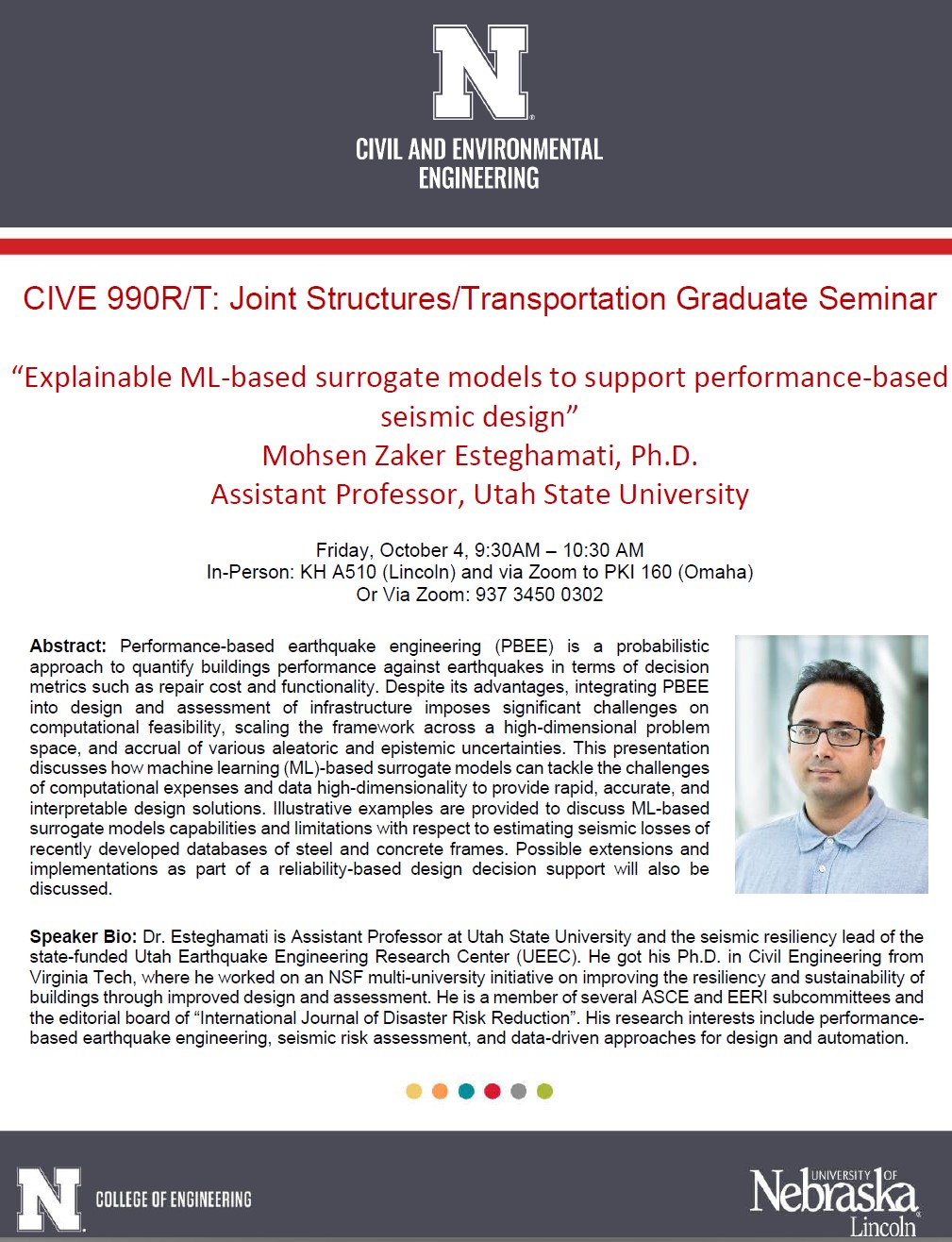
Who: Mohsen Zaker Esteghamati, Assistant Professor, Civil and Environmental Engineering, Utah State University
When: Friday October 4, 9:30-10:30AM
Where: PKI 160, KH A510, Zoom: 9373 450 0302
Title: Explainable ML-based surrogate models to support performance-based seismic design
Abstract: Performance-based earthquake engineering (PBEE) is a probabilistic approach to quantify buildings performance against earthquakes in terms of decision metrics such as repair cost and functionality. Despite its advantages, integrating PBEE into design and assessment of infrastructure imposes significant challenges on computational feasibility, scaling the framework across a high-dimensional problem space, and accrual of various aleatoric and epistemic uncertainties. This presentation discusses how machine learning (ML)-based surrogate models can tackle the challenges of computational expenses and data high-dimensionality to provide rapid, accurate, and interpretable design solutions. Illustrative examples are provided to discuss ML-based surrogate models capabilities and limitations with respect to estimating seismic losses of recently developed databases of steel and concrete frames. Possible extensions and implementations as part of a reliability-based design decision support will also be discussed.
Speaker Bio: Dr. Esteghamati is Assistant Professor at Utah State University and the seismic resiliency lead of the state-funded Utah Earthquake Engineering Research Center (UEEC). He got his Ph.D. in Civil Engineering from Virginia Tech, where he worked on an NSF multi-university initiative on improving the resiliency and sustainability of buildings through improved design and assessment. He is a member of several ASCE and EERI subcommittees and the editorial board of “International Journal of Disaster Riskk Reduction”. His research interests include performance-based earthquake engineering, seismic risk assessment, and data-driven approaches for design and automation.